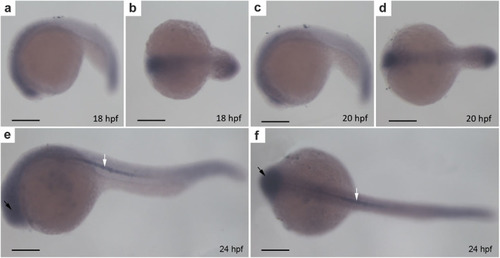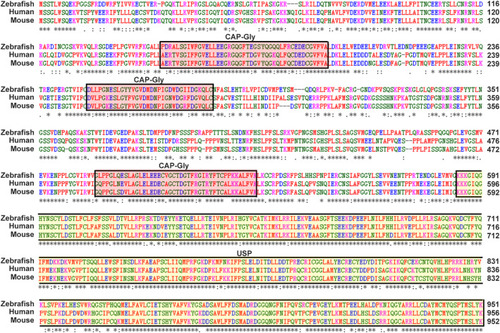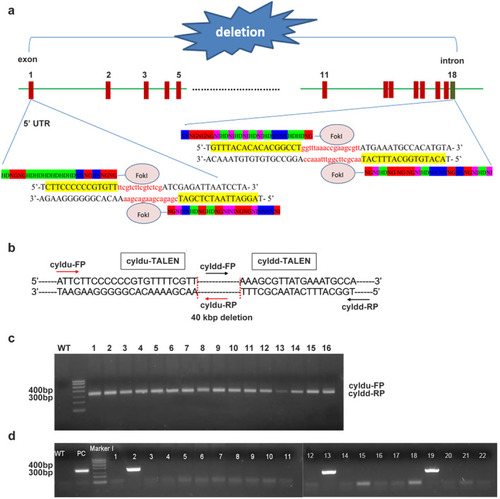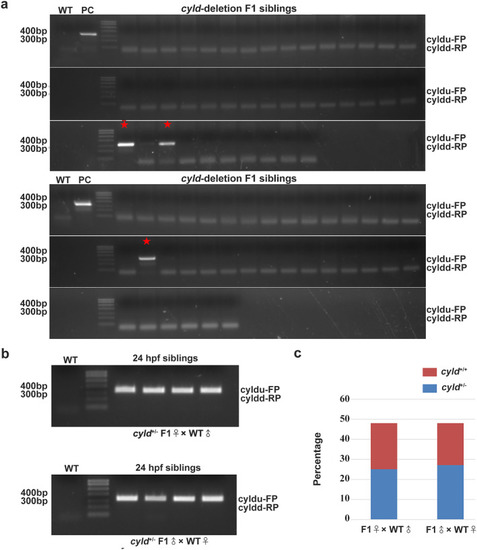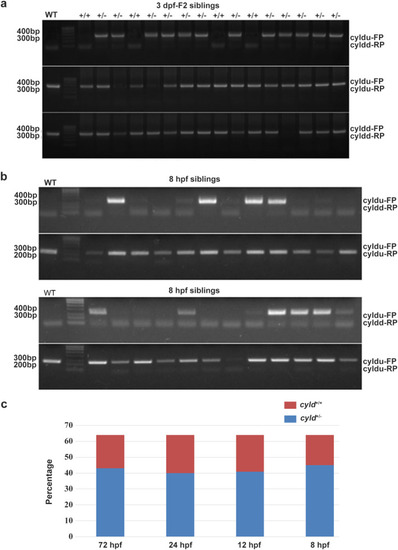- Title
-
Potential role for the tumor suppressor CYLD in brain and notochord development
- Authors
- Li, T., Wang, Y., Li, D., Zhou, J., Zhang, B., He, X.
- Source
- Full text @ Thorac Cancer
|
CYLD expression varies across the time course of early development and is localized to the brain. (a) CYLD expression at different stages of zebrafish embryogenesis. (b) Quantification of CYLD expression in zebrafish embryos (mean ± SEM from three experiments). (c) CYLD expression in the primary organs of zebrafish. (d) Quantification of CYLD expression in zebrafish organs (mean ± SEM from 3 experiments) EXPRESSION / LABELING:
|
|
CYLD mainly localizes to the brain and notochord. (a–f) Whole‐mount in situ hybridization of zebrafish embryos. (a–b), (c–d), (e–f) side and top views of zebrafish embryos at 18 hpf, 20 hpf, and 24 hpf, respectively. The black arrows represent the brain of the zebrafish. The white arrows represent the notochord of the zebrafish. Scale bar = 250 μm EXPRESSION / LABELING:
|
|
CYLD is highly conserved. Sequence alignment of CYLD in humans, mice, and zebrafish. ClustalW was used for alignment. Asterisks indicate positions that have a single, fully conserved residue; colons and stops indicate that the stronger‐ and weaker‐score groups are fully conserved, respectively. The main domains are represented in the box |
|
Construction of CYLD‐deleted zebrafish by TALENs. (a) Schematic of the genomic locations of the two CYLD ‐TALEN targets. (b) the schematic of the PCR primers for genotyping. (c) Evaluation of large‐fragment deletion efficiency of |
|
Heterozygous mutants were reproducible. (a) CYLD F1 mutant screening by genotyping. The red asterisk indicates heterozygous mutants. (b–c) Analysis of the female and male gametes of the CYLD F1 mutants PHENOTYPE:
|
|
Homozygous deletion of CYLD results in fetal death. (a) 3 dpf of CYLD F2 mutant screening by genotyping. (b) 8 hpf of CYLD F2 mutant screening by genotyping. (c) Statistical results of 8 hpf, 12 hpf, 24 hpf, and 3 dpf mutants with different genotypes, respectively PHENOTYPE:
|


